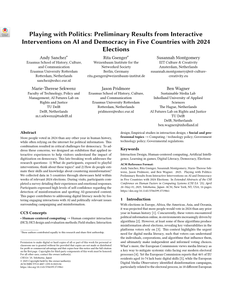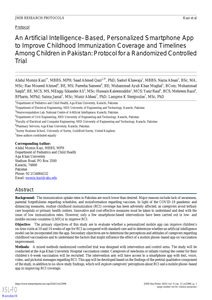With the proliferation of misinformation on the web, automatic methods for detecting misinformation are becoming an increasingly important subject of study. If automatic misinformation detection is applied in a real-world setting, it is necessary to validate the methods being used. Large language models (LLMs) have produced the best results among text-based methods. However, fine-tuning such a model requires a significant amount of training data, which has led to the automatic creation of large-scale misinformation detection datasets. In this paper, we explore the biases present in one such dataset for misinformation detection in English, NELA-GT-2019. We find that models are at least partly learning the stylistic and other features of different news sources rather than the features of unreliable news. Furthermore, we use SHAP to interpret the outputs of a fine-tuned LLM and validate the explanation method using our inherently interpretable baseline. We critically analyze the suitability of SHAP for text applications by comparing the outputs of SHAP to the most important features from our logistic regression models.
DOCUMENT
With the proliferation of misinformation on the web, automatic misinformation detection methods are becoming an increasingly important subject of study. Large language models have produced the best results among content-based methods, which rely on the text of the article rather than the metadata or network features. However, finetuning such a model requires significant training data, which has led to the automatic creation of large-scale misinformation detection datasets. In these datasets, articles are not labelled directly. Rather, each news site is labelled for reliability by an established fact-checking organisation and every article is subsequently assigned the corresponding label based on the reliability score of the news source in question. A recent paper has explored the biases present in one such dataset, NELA-GT-2018, and shown that the models are at least partly learning the stylistic and other features of different news sources rather than the features of unreliable news. We confirm a part of their findings. Apart from studying the characteristics and potential biases of the datasets, we also find it important to examine in what way the model architecture influences the results. We therefore explore which text features or combinations of features are learned by models based on contextual word embeddings as opposed to basic bag-of-words models. To elucidate this, we perform extensive error analysis aided by the SHAP post-hoc explanation technique on a debiased portion of the dataset. We validate the explanation technique on our inherently interpretable baseline model.
DOCUMENT
More people voted in 2024 than any other year in human history, while often relying on the internet for political information. This combination resulted in critical challenges for democracy. To address these concerns, we designed an exhibition that applied interactive experiences to help visitors understand the impact of digitization on democracy. This late-breaking work addresses the research questions: 1) What do participants, exposed to playful interventions, think about these topics? and 2) How do people estimate their skills and knowledge about countering misinformation? We collected data in 5 countries through showcases held within weeks of relevant 2024 elections. During visits, participants completed a survey detailing their experiences and emotional responses. Participants expressed high levels of self-confidence regarding the detection of misinformation and spotting AI-generated content. This paper contributes to addressing digital literacy needs by fostering engaging interactions with AI and politically relevant issues surrounding campaigning and misinformation.
MULTIFILE

Fabricated is an award-winning, international exhibition on how digitisation is changing democracy. Through games and interactive moments, fabricated helps participants build their digital literacy and learn about AI, misinformation, and more. fabricated just completed a successful European tour, engaging with over 2,250 European residents and collecting a wealth of data on how participants feel about our rapidly digitising society. The fabricated team has secured funding to tour the United States in October 2024 in the lead-up to the American Presidential Elections. Fabricated is a traveling research exhibit that promotes digital literacy. This project, led by the Sustainable Media Lab (SML), brings together an international, cross-sector partnership of researchers, students, nonprofits, journalists, government representatives, and libraries. fabricated uses games and interactive moments to teach communities about digital issues like AI, misinformation, content moderation, targeted advertising, and the industry of digital services designed to influence your vote. Fabricated is currently available in English, Dutch, and German.
MULTIFILE
The objective of this study is to shed light on the added value of the services of five disciplines in M&A advisory in the SME domain: accountants, bankers, business brokers, fiscalists and lawyers. Theory is inconclusive in the added value of advisory services and research on the subject is hardly available. RBV predicts direct benefits in using advisory services in M&A, leading to less obstacles in and directly after M&A or lagged effects on more renewal of the firm. The theory of structural holes, agency theory and management entrenchment theory on the other hand predict neutral or negative effect of advisory services in M&A. The dataset includes 899 mergers and acquisitions (1) completed before 2003; (2) with an acquirer having bought 100% of target shares or assets; (3) of German, Belgian or Dutch origin; (4) of non-listed firms; (5) where acquirer and target firm are not member of the same family. Using (M)ANOVA’s and controlling for the effects of more than one advisor involved, the outcomes show consistently that the M&A advisory services do not reduce obstacles like financing, misinformation and culture and staff problems during or immediately after M&A. Looking at lagged effects of advisory services in the period of two years after M&A strategic more renewal by innovation occurs if bankers, fiscalists and lawyers are involved. Involvement of accountants and business brokers on the other hand decrease renewal.
DOCUMENT

BackgroundPeople from lower and middle socioeconomic classes and vulnerable populations are among the worst affected by the COVID-19 pandemic, thus exacerbating disparities and the digital divide.ObjectiveTo draw a portrait of e-services as a digital approach to support digital health literacy in vulnerable populations amid the COVID-19 infodemic, and identify the barriers and facilitators for their implementation.MethodsA scoping review was performed to gather published literature with a broad range of study designs and grey literature without exclusions based on country of publication. A search was created in Medline (Ovid) in March 2021 and translated to Medline, PsycINFO, Scopus and CINAHL with Full Text (EBSCOhost). The combined literature search generated 819 manuscripts. To be included, manuscripts had to be written in English, and present information on digital intervention(s) (e.g. social media) used to enable or increase digital health literacy among vulnerable populations during the COVID-19 pandemic (e.g. older adults, Indigenous people living on reserve).ResultsFive articles were included in the study. Various digital health literacy-enabling e-services have been implemented in different vulnerable populations. Identified e-services aimed to increase disease knowledge, digital health literacy and social media usage, help in coping with changes in routines and practices, decrease fear and anxiety, increase digital knowledge and skills, decrease health literacy barriers and increase technology acceptance in specific groups. Many facilitators of digital health literacy-enabling e-services implementation were identified in expectant mothers and their families, older adults and people with low-income. Barriers such as low literacy limited to no knowledge about the viruses, medium of contamination, treatment options played an important role in distracting and believing in misinformation and disinformation. Poor health literacy was the only barrier found, which may hinder the understanding of individual health needs, illness processes and treatments for people with HIV/AIDS.ConclusionsThe literature on the topic is scarce, sparse and immature. We did not find any literature on digital health literacy in Indigenous people, though we targeted this vulnerable population. Although only a few papers were included, two types of health conditions were covered by the literature on digital health literacy-enabling e-services, namely chronic conditions and conditions that are new to the patients. Digital health literacy can help improve prevention and adherence to a healthy lifestyle, improve capacity building and enable users to take the best advantage of the options available, thus strengthening the patient’s involvement in health decisions and empowerment, and finally improving health outcomes. Therefore, there is an urgent need to pursue research on digital health literacy and develop digital platforms to help solve current and future COVID-19-related health needs.
DOCUMENT
Increasingly, Instagram is discussed as a site for misinformation, inau-thentic activities, and polarization, particularly in recent studies aboutelections, the COVID-19 pandemic and vaccines. In this study, we havefound a different platform. By looking at the content that receives themost interactions over two time periods (in 2020) related to three U.S.presidential candidates and the issues of COVID-19, healthcare, 5G andgun control, we characterize Instagram as a site of earnest (as opposedto ambivalent) political campaigning and moral support, with a rela-tive absence of polarizing content (particularly from influencers) andlittle to no misinformation and artificial amplification practices. Mostimportantly, while misinformation and polarization might be spreadingon the platform, they do not receive much user interaction.
MULTIFILE
Background: The immunization uptake rates in Pakistan are much lower than desired. Major reasons include lack of awareness, parental forgetfulness regarding schedules, and misinformation regarding vaccines. In light of the COVID-19 pandemic and distancing measures, routine childhood immunization (RCI) coverage has been adversely affected, as caregivers avoid tertiary care hospitals or primary health centers. Innovative and cost-effective measures must be taken to understand and deal with the issue of low immunization rates. However, only a few smartphone-based interventions have been carried out in low- and middle-income countries (LMICs) to improve RCI. Objective: The primary objectives of this study are to evaluate whether a personalized mobile app can improve children’s on-time visits at 10 and 14 weeks of age for RCI as compared with standard care and to determine whether an artificial intelligence model can be incorporated into the app. Secondary objectives are to determine the perceptions and attitudes of caregivers regarding childhood vaccinations and to understand the factors that might influence the effect of a mobile phone–based app on vaccination improvement. Methods: A mixed methods randomized controlled trial was designed with intervention and control arms. The study will be conducted at the Aga Khan University Hospital vaccination center. Caregivers of newborns or infants visiting the center for their children’s 6-week vaccination will be recruited. The intervention arm will have access to a smartphone app with text, voice, video, and pictorial messages regarding RCI. This app will be developed based on the findings of the pretrial qualitative component of the study, in addition to no-show study findings, which will explore caregivers’ perceptions about RCI and a mobile phone–based app in improving RCI coverage. Results: Pretrial qualitative in-depth interviews were conducted in February 2020. Enrollment of study participants for the randomized controlled trial is in process. Study exit interviews will be conducted at the 14-week immunization visits, provided the caregivers visit the immunization facility at that time, or over the phone when the children are 18 weeks of age. Conclusions: This study will generate useful insights into the feasibility, acceptability, and usability of an Android-based smartphone app for improving RCI in Pakistan and in LMICs.
DOCUMENT

Leerlingen groeien op in een wereld die permanent online is. Ze hebben toegang tot een grote hoeveelheid informatie en ze zijn constant online in interactie. Het onderwijs kan leerlingen opleiden tot mediawijze burgers.
LINK